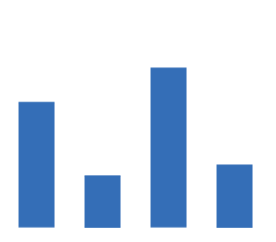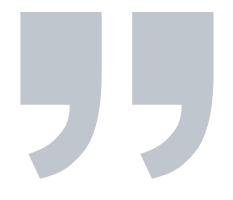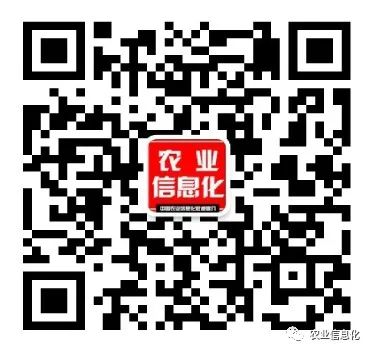
This article is included in “Agricultural Engineering Technology – Agricultural Informatization” 2024, Issue 9, Table of Contents 21

Abstract:Based on IoT technology, this paper designs and implements an intelligent tomato cultivation system with automated and intelligent control, featuring high stability, reliability, maximized economic benefits, resource conservation, and environmental protection. The system mainly consists of soil moisture monitoring and irrigation control, light intensity monitoring and supplementary lighting control, temperature monitoring and environmental regulation, pest monitoring and control, as well as data storage and visualization, aiming to provide a feasible solution for the intelligent development of agriculture.
Keywords: IoT technology; intelligent cultivation system; tomatoes
The application of IoT technology in modern agriculture has become an inevitable trend. To promote efficient and high-quality agricultural production, many agricultural fields have begun to explore the application of IoT technology. As an important economic crop, achieving automated and intelligent control in the cultivation of tomatoes is of great significance for improving both the yield and quality of tomatoes.
1
Application of IoT Technology in Modern Agriculture
IoT technology based on sensor networks and data analysis can monitor key parameters such as soil moisture, climate conditions, and crop growth, thereby achieving precise irrigation, intelligent fertilization, and pest warning. Additionally, IoT technology can assist farmers in remote monitoring and management, promoting efficient agricultural production. By analyzing real-time data, farmers can make scientific decisions, reduce resource waste, and improve crop quality and yield.
2
Design Principles of the Intelligent Tomato Cultivation System
2.1 Intelligent Control
One principle of the design of the intelligent tomato cultivation system is to automate and intelligently control the cultivation process. This requires the system to automatically monitor and adjust temperature, humidity, light, and other environmental factors to provide the optimal conditions for tomato growth. By utilizing sensors, automation equipment, and intelligent algorithms, the system can monitor the plant status in real-time and automatically perform tasks such as watering, fertilizing, and irrigation to meet the water requirements of the tomatoes. The intelligent cultivation system can improve planting efficiency, reduce labor input, and ensure that plants receive the best growth conditions.
2.2 Reliability
The intelligent tomato cultivation system must have high stability and reliability to ensure the normal growth of tomatoes. Comprehensive testing and quality control of all system components and equipment are necessary. Additionally, the system should have automatic fault detection and alarm functions to promptly identify and resolve issues, preventing negative impacts on the growth environment of the tomatoes. A stable and reliable cultivation system can ensure the healthy growth of tomatoes, increase yield, and improve quality.
2.3 Economic Efficiency
When designing the intelligent tomato cultivation system, it is essential to balance system costs and benefits to maximize economic efficiency. In the selection and design of system components, a trade-off between cost and performance should be made, opting for the most cost-effective devices and processes. Furthermore, the system should feature energy-saving and high resource utilization efficiency characteristics to reduce waste of energy and resources. After reasonable investment and management, the yield and quality of tomatoes can be improved, production costs reduced, and maximum economic benefits achieved.
2.4 Environmental Protection
When designing the intelligent tomato cultivation system, attention should be paid to resource conservation and environmental protection to minimize environmental impact. The system should adopt water-saving and energy-saving technologies and equipment to reduce the consumption of water resources and energy. Additionally, the system should implement environmentally friendly fertilization and pest control measures to reduce soil and ecological pollution. This intelligent cultivation system optimizes the planting process, reduces the use of pesticides and fertilizers, achieving sustainable agricultural production, protecting the ecological environment, and enhancing the safety and quality of agricultural products.
3
Implementation Strategies for the Intelligent Tomato Cultivation System Based on IoT Technology
3.1 Soil Moisture Monitoring and Irrigation Control
The IoT-based intelligent tomato cultivation system can monitor soil moisture conditions in real-time using soil moisture sensors. The system can automatically control irrigation equipment to perform watering tasks according to preset moisture thresholds. When the soil moisture falls below the set value, the system automatically activates the irrigation equipment to replenish moisture, ensuring that the water requirements of the tomato plants are met. This system combines real-time monitoring with intelligent control, avoiding adverse effects on tomato growth caused by soil drought or excessive moisture, and improving water resource utilization efficiency.
3.2 Light Intensity Monitoring and Supplementary Lighting Control
IoT technology can achieve monitoring and regulation of light intensity in the tomato cultivation environment. For example, a certain tomato plantation introduces IoT technology to monitor light intensity. The system, equipped with light sensors, can monitor changes in light intensity in real-time. On cloudy days, if the detected light intensity is only 1000 lux, far below the minimum light requirement for normal tomato growth (5000 lux), the system analyzes this data and determines that light is insufficient, automatically activating supplementary lighting equipment. LED lights controlled by IoT technology will provide appropriate lighting. After several minutes of supplementary lighting, the light intensity reaches 5000 lux, allowing the tomato plants to continuously perform photosynthesis and maintain normal growth conditions. The monitoring and supplementary lighting control using IoT technology ensure that tomato plants receive adequate lighting even in low-light conditions. This intelligent control system can improve tomato growth efficiency and yield while reducing manual operation requirements. This case demonstrates the application of IoT technology in agriculture, providing accurate environmental control methods through real-time monitoring and intelligent control to improve crop growth conditions.
3.3 Temperature Monitoring and Environmental Regulation
By setting temperature sensors, the system can monitor temperature changes in the cultivation environment in real-time. The system can automatically adjust ventilation, heating, or cooling equipment within the greenhouse or cultivation area according to the set temperature range to maintain suitable temperature conditions. For example, during high summer temperatures, if the temperature sensor detects that the cultivation environment exceeds the preset upper limit, such as 30 degrees Celsius, the system analyzes this data and determines that the temperature is too high, thus activating cooling equipment. Cooling devices controlled by IoT technology, such as mist cooling systems or fans, will be employed to lower the temperature. After several minutes of cooling, the temperature in the cultivation environment gradually returns to a suitable range, such as 25 degrees Celsius, allowing the tomato plants to grow under ideal conditions without suffering from high temperatures. The temperature monitoring and environmental regulation using IoT technology can provide accurate temperature control and the best environment for tomato plant growth. This intelligent control system can improve tomato growth efficiency and yield while reducing energy waste and manual intervention. This case illustrates the application of IoT technology in agriculture, optimizing the crop growth environment through real-time monitoring and intelligent control to enhance agricultural production efficiency.
3.4 Pest Monitoring and Control
By placing pest monitoring sensors in the cultivation area, the intelligent agricultural system can achieve real-time monitoring of pests. Once pests are detected, the system will immediately activate intelligent algorithms for in-depth analysis, identify the problem, and quickly issue an alarm. At the same time, the system will automatically implement corresponding control measures, such as spraying pesticides, to quickly address the pest issue. This real-time monitoring and intelligent control method facilitates early detection of pests and the implementation of effective measures, reducing the impact of pests on tomato yield and quality. This intelligent pest management strategy enhances agricultural production efficiency and profitability, playing a significant role in ensuring food security and sustainable agricultural development.
3.5 Data Storage and Visualization
With the support of IoT technology, the intelligent cultivation system can record and store various parameters related to the tomato growth environment, such as temperature, humidity, and light, in real-time. This data will be preserved and managed long-term on a cloud platform or local server to ensure data integrity and security. Additionally, the system features strong data visualization capabilities, transforming complex data into intuitive and easily understandable charts and curves, facilitating real-time monitoring and analysis of tomato growth status and environmental conditions by farmers or managers. This visualization method helps users gain a clearer understanding of key data in the cultivation process, providing a strong reference for planting management decisions and optimization.
4
Conclusion
The design and implementation of the intelligent tomato cultivation system based on IoT technology provide a practical solution for the intelligent development of agriculture. By achieving soil moisture monitoring and irrigation control, light intensity monitoring and supplementary lighting control, temperature monitoring and environmental regulation, pest monitoring and control, as well as data storage and visualization, it effectively improves the yield and quality of tomatoes while conserving resources and protecting the environment.

References:
[1] Guo Xiaoqian. Design and Implementation of an Intelligent Mushroom Cultivation Monitoring System [D]. Qufu Normal University, 2021.
[2] Wang Zhanbei, Han Tuanjun, Wang Guibao, et al. Design and Testing of an Intelligent Monitoring System for Organic Rice Field Cultivation Environment in Southern Shaanxi [J]. Jiangsu Agricultural Sciences, 2021, 49(23): 195-200.
[3] Xing Jingyi. Design of an Intelligent Environmental Control System for Indoor Plant Cultivation [J]. Journal of Inner Mongolia University of Science and Technology, 2019, 38(4): 360-365.
Author Affiliation: Feixian Agricultural and Rural Bureau
Download link for this article
http://www.nygcjs.cn/cn/article/doi/10.16815/j.cnki.11-5446/s.2024.26.021
 Scan to follow us “Agricultural Informatization” magazine
Scan to follow us “Agricultural Informatization” magazine
12 issues published in 2025, ISSN: CN11-5436/S.
Postal distribution code: 82-133
Subscription method: Direct subscription from the editorial department
Subscription address: 41 Maizidian Street, Chaoyang District, Beijing
Postal code: 100125
Subscription phone: 010-59195603
Subscription and submission email: [email protected]